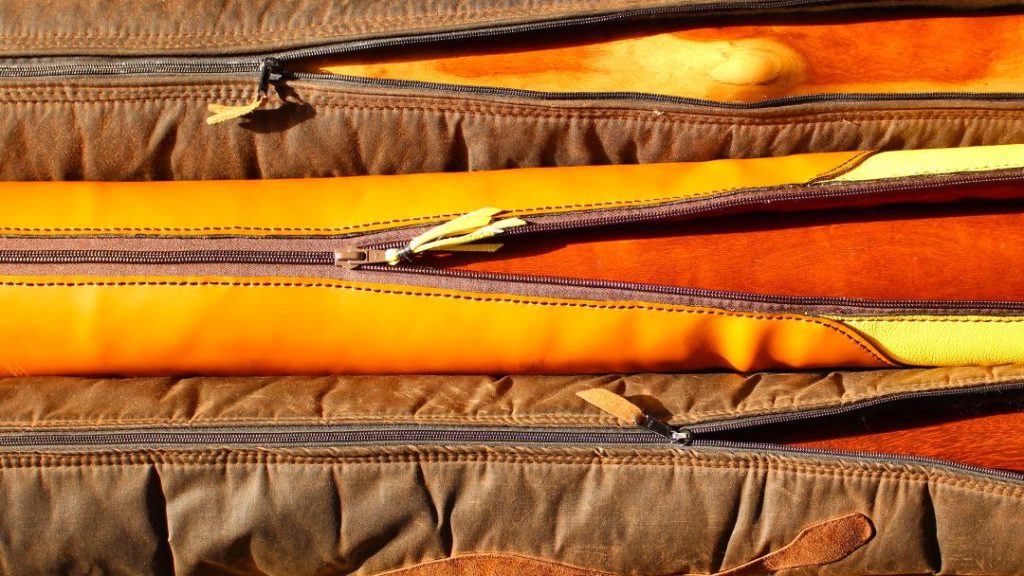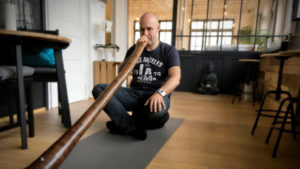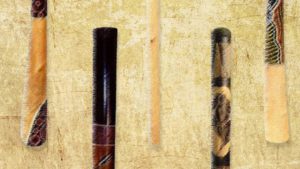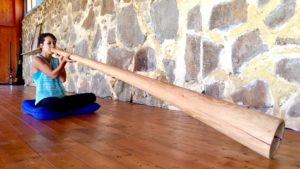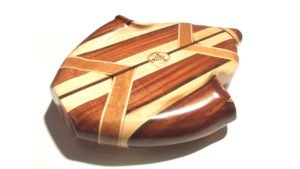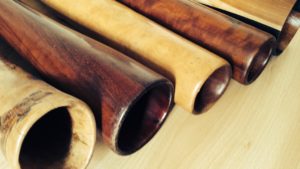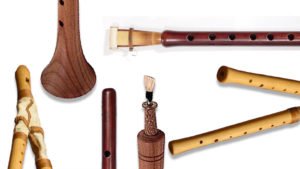Buying a good didgeridoo is one thing. Taking care of it is another. Once you start traveling with your instrument, a bag quickly becomes essential. Here’s a quick overview of the world of didgeridoo bags… Because their quality varies greatly, and prices can easily triple (or more). If you’re lost in the world of didgeridoo bags, don’t worry — it’s a jungle out there! Here’s an article to help you see things more clearly. Let’s go!
Your didgeridoo bag budget proportional to the price of your instrument
It seems obvious that if you spent €50 on a didgeridoo, you’re not going to buy a €300 bag (unless you’re seriously lacking in logic!). On the other hand, if you got a €1000 didgeridoo, spending €150 on a bag sounds reasonable. Fortunately, manufacturers have you covered and you’ll find bags at all price points with various padding qualities. Your budget will therefore guide your choice.
Didgeridoo bags starting from €15
From didgeridoo-passion
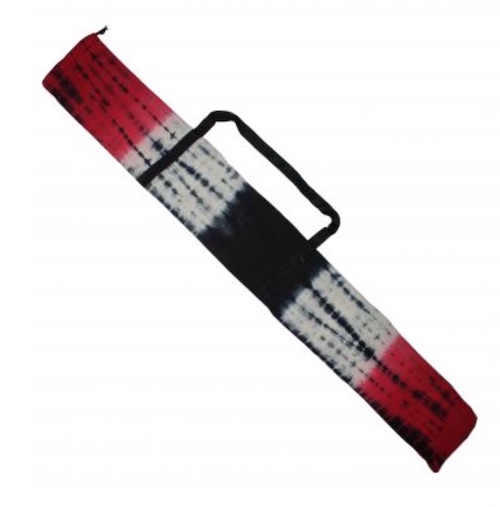
These bags were very popular in the mid-2000s. They were pretty much the only ones available at the time. If memory serves, the first to sell them in Europe was Aboriginal Arts in Amsterdam.
Let’s be honest, they’re not top quality. Padding is minimal, and the fabric is not waterproof. They close using two straps you tie together.
That said, everything’s relative — and for €15, it will provide basic protection for your didgeridoo. I had one when I was starting out and was quite happy with it. Of course, over time it wears out, as the fabric is thin. But for a beginner instrument, it does the job without complaint and without breaking the bank.
You’ll find it at didgeridoo-passion, the go-to supplier for every good didge player!
From Woodbrass
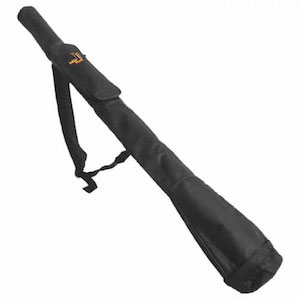
These bags are slightly more expensive than those above. I never owned one, but I’ve seen other players using them and they seemed satisfied.
However, I’m not convinced this type of bag lasts in the long run. I seem to recall the stitching can weaken over time. If you own one, please share your experience — it could help others!
Personally, I’m not a fan of the design — the conical end meant for the bell isn’t well thought out. If your didgeridoo doesn’t have a large bell, it will wobble around — not ideal.
I’m including it here for reference, but I wouldn’t really recommend it. The fact that it comes from a generic online shop doesn’t help. Honestly (and I have no stake in this), I encourage you to go with other products from didgeridoo-passion or Goutte de mouche. By doing so, you’re supporting didgeridoo enthusiasts just like you.
“Alternative” didgeridoo bags
There’s also another way: using bags made for fishing rods, skis, or snowboards (especially for carrying multiple didgeridoos). These likely won’t be padded, so be sure to wrap your instrument in a blanket or something soft!
It’s a DIY solution, but it can get the job done.
Oil-Skin from didgeridoo-passion starting at €69
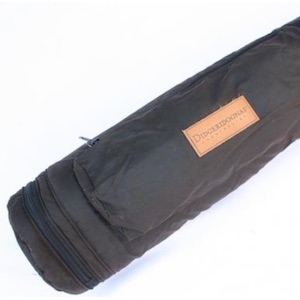
With this type of bag, we’re clearly moving upmarket!
These use the famous Australian fabric “Oil Skin”. Its texture is somewhat leather-like. It’s highly resistant, waterproof, and ages well. These bags are lined with sheep wool and an inner nylon layer to shield your didgeridoo from temperature changes.
You’ll find two models: Classic bags (from €69) and Deluxe bags (from €99).
They differ mainly in strap attachment — sewn (Classic) or carabiner (Deluxe) — and closure system: Velcro for Classic, zipper for Deluxe.
Prices vary within each range depending on the bag’s size and diameter.
Snake-Skin from didgeridoo-breath starting at €160
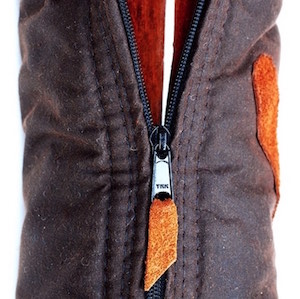
I bought two of these during my trip to Australia in 2007–2008 and even today (June 2016), they show no tears or signs of wear.
The padding is excellent. Your didg is protected — exactly what you need!
Despite their quality, two things make these a less obvious choice: cost and environmental impact. Expect to pay around €160 plus shipping and import taxes…
So they end up quite expensive and arguably not justified ecologically.
Bottom line: if you’re in Australia, go for it — they offer great value for money. Otherwise, consider spending a bit more for the absolute top-end product below!
Labr’housse création: artisan bags from €30 to €200
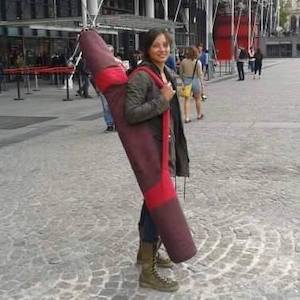
Since writing this article, Élodie Labrousse, creator of “Labr’housse création”, reached out. She makes didgeridoo bags among other things. I’ve seen her work and can absolutely recommend it. She totally deserves a place in this article!
There are two ranges:
- The first starts at €35. These are standard-size transport bags that don’t offer much protection but are light and affordable.
- The second includes higher-quality, custom-made suede bags priced between €140 and €200. These feature triple-layer padding, rigid leather end caps with insulating foam, and options like accessory pockets or a hood.
You can contact Élodie via her Facebook page. A website and €70 range are expected soon!
Toilerie du Dragon: from €150
I don’t personally know Toilerie du Dragon, but I’ve heard that Chris from Didgeridoo Element used to have his bags made there. Estelle isn’t a didgeridoo bag specialist, but her skills are undeniable! By contacting her directly, you can get custom-made didgeridoo bags with top-quality materials and personalized designs. Prices start around €150 according to Romu, a Wakademy member who ordered one!
“Goutte de mouche” – Agustina Mosca’s premium leather bags: from €300
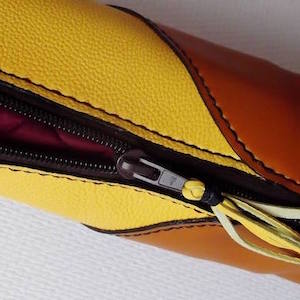
Let me say this right away: this is top-of-the-line!
These handmade bags are crafted from thick, high-quality leather, customized to your didgeridoo’s exact dimensions by Agustina Mosca, who is also a didgeridoo player.
This is true craftsmanship, and it shows.
If you’ve got the budget, go for a “Goutte de mouche” bag — I bought one years ago and I’m still extremely happy with its quality, protection, and looks.
Here are its strengths:
- The leather is lined with thick padding — your didgeridoo feels like it’s in a luxury case!
- The zipper runs the full length and feels super sturdy.
- The aesthetic is stunning and customizable.
- Most importantly: the bottom is reinforced with a semi-rigid base to protect against impacts from below — the most dangerous ones that can cause cracks.
You can contact Agustina via her dedicated Facebook page.
Conclusion: a budget proportional to your didgeridoo
To wrap up, check these four points when choosing a bag: waterproofing, lining thickness, fabric quality, and bottom padding. These factors vary most between bags.
If you’re on a tight budget and handy with a sewing machine, you could even make your own! It’s quite simple and a great value-for-money option.
If you think this article could help others, feel free to share it! Or comment to share more tips or suppliers. 🙂


